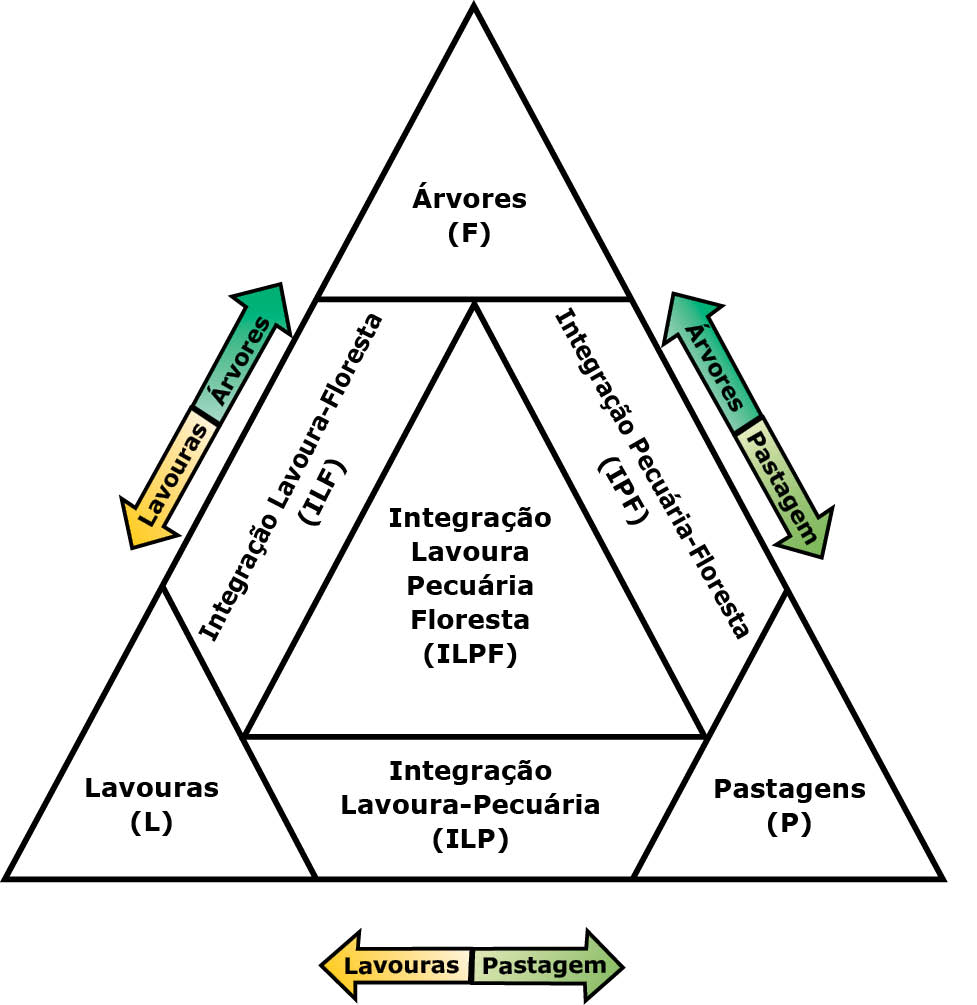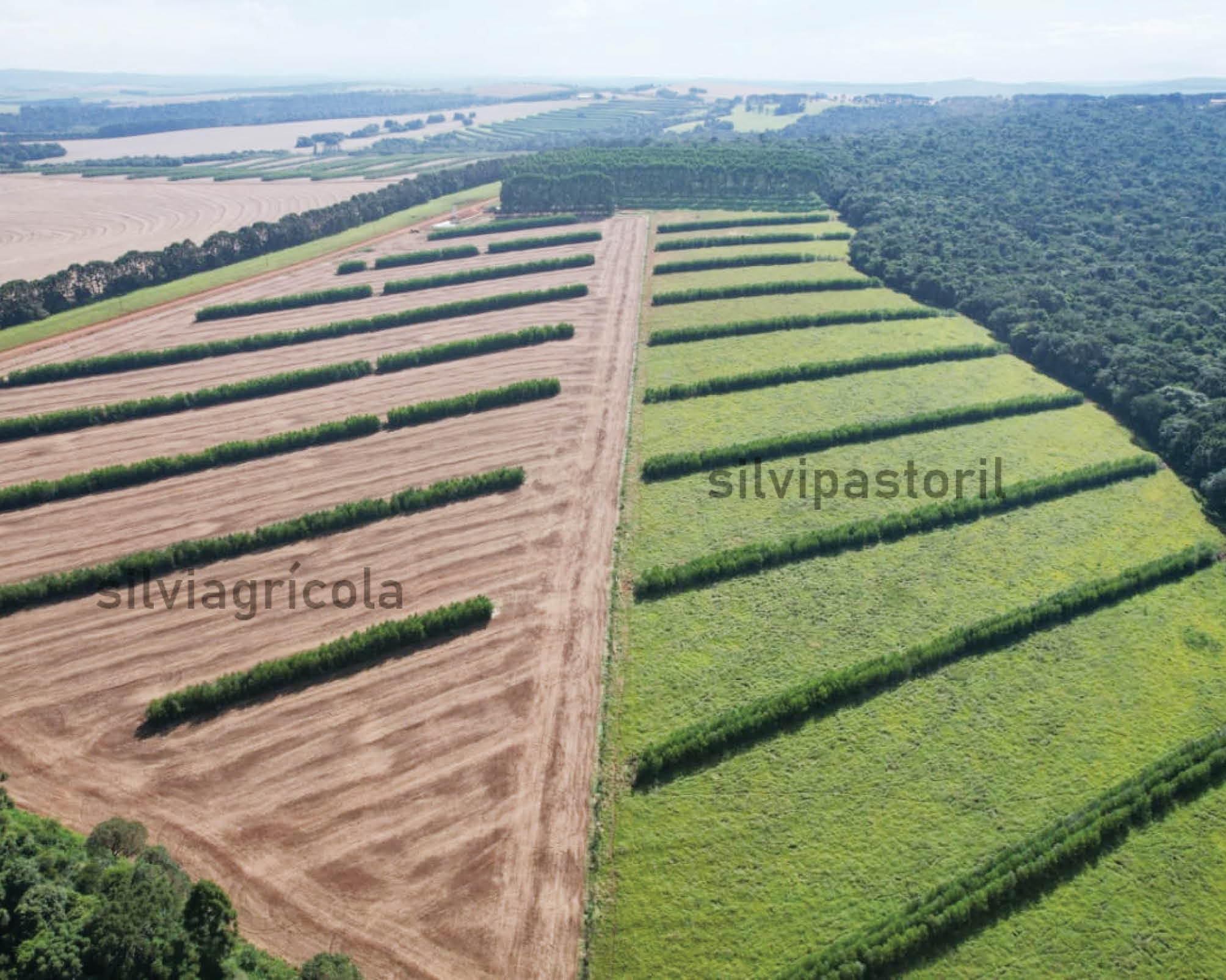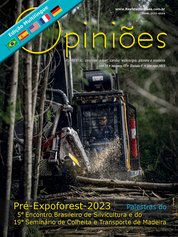Vanderley Porfírio-da-Silva
Pesquisador da Embrapa Florestas
OpCP72
A iLPF na década de 2020
Nas quase cinco décadas de existência mundial, o conceito agrossilvipastoril foi entendido e definido de múltiplas formas, por vezes referindo-se a uma escala de interesse específico por uma forma de produzir. O acrônimo iLPF foi cunhado pela Embrapa para se referir à integração Lavoura-Pecuária-Floresta como uma estratégia de uso da terra que vai além de um sistema de produção específico.
A contribuição potencial para a recuperação e conservação ao lado da produtividade da terra foi expressa de muitas maneiras, enfatizando a conservação do solo, degradação da terra, segurança alimentar, gestão integrada de recursos naturais, ou conservação da biodiversidade.
 A gama de estudos disponíveis inclui árvores e sua silvicultura, interações entre componentes arbóreo e não-arbóreo, as interações entre terra, trabalho, conhecimento e risco em escala de fazenda, dinâmica da cobertura de árvore e sua alteração no tempo e espaço, as cadeias de valor que começam com a produção de árvores, produção de grãos, forragens e gado, e os domínios de política de silvicultura, agrícola e pecuária no contexto dos ODS, o comércio responsável em mercados globalizantes e as mudanças climáticas globais. A inclusão dessas abordagens em um único termo pode indicar a necessidade de maior clareza sobre as diferentes escalas envolvidas e suas conexões.
A gama de estudos disponíveis inclui árvores e sua silvicultura, interações entre componentes arbóreo e não-arbóreo, as interações entre terra, trabalho, conhecimento e risco em escala de fazenda, dinâmica da cobertura de árvore e sua alteração no tempo e espaço, as cadeias de valor que começam com a produção de árvores, produção de grãos, forragens e gado, e os domínios de política de silvicultura, agrícola e pecuária no contexto dos ODS, o comércio responsável em mercados globalizantes e as mudanças climáticas globais. A inclusão dessas abordagens em um único termo pode indicar a necessidade de maior clareza sobre as diferentes escalas envolvidas e suas conexões. A figura em destaque fornece uma tipologia de diferentes componentes que podem ser vistos aninhados: compatíveis, mas distintos em conceitos, métodos e implicações práticas e políticas. As várias definições que têm sido dadas para sistemas agrossilvipastoris refletem tal aspecto.
As atividades de lavoura de grãos, de criação de gado a pasto, e de silvicultura de florestas plantadas coexistem e podem convergir para a integração Lavoura-Pecuária-Floresta. Nos primeiros estudos, nas décadas de 1970-1980, o enfoque era no produto da silvicultura, o gado era inserido nas plantações florestais convencionais com o propósito primeiro de controle do sub-bosque; a melhoria de fluxo de caixa, que pode ser originada da produção animal nos primeiros anos do crescimento florestal, era negligenciada.
Nos anos de 1990, surge o enfoque silvipastoril na produção pecuária, com árvores plantadas em baixa densidade nas pastagens, geralmente por ocasião da prática de reforma de pastagens, a prioridade era para a proteção do gado (sombra), o controle da erosão do solo e, sem prioridade, para a renda dos produtos das árvores, aspecto verificável na negligência para com as práticas silviculturais.
O enfoque silvicultural nos anos 1990 agregava consórcios com lavouras no primeiro ano de crescimento das plantações florestais, visando os benefícios do cultivo agrícola no crescimento das árvores e a amortização do investimento florestal; em alguns casos, o cultivo de lavouras do primeiro ano era sucedido por pastoreio para aumentar a proteção contra incêndios florestais.
Assim, embora compatíveis, nos anos 1990, predominavam duas tipologias, distintas em conceitos, métodos e implicações práticas e políticas. A dicotomia entre silvicultura e agropecuária estava clara. No começo dos anos 2000, além das árvores na reforma de pasto, iniciou-se a introdução de árvores em meio às pastagens já formadas. Embora em pequena escala, a bovinocultura de leite introduzia árvores nas pastagens sob pastejo, mas ainda com a prioridade de proteção do gado e controle de erosão do solo. Já em meados da década, decorrente de ações, nos anos 1980-1990, que tinham convertido pastagens convencionais em silvipastoris, os produtos das árvores começavam a ser percebidos. Essa maturação das ações de conversão de pastagens em silvipastoris reforça a arborização de pastagens para a proteção do gado e desperta para a obtenção dos produtos das árvores, e o controle de erosão do solo é mantido como efeito colateral.
O acúmulo de experiências a campo e o aumento da massa crítica técnico-científica proporcionou, na década de 2010, a implementação do Plano ABC – Agricultura de Baixa Emissão de Carbono, onde figurou pela primeira vez a tecnologia agrossilvipastoril como uma das estratégias para a “Consolidação de uma Economia de Baixa Emissão de Carbono na Agricultura”. Nesse processo de acúmulo de conhecimento e de aumento da massa crítica, alguns fatos concorrem para que a estratégia iLPF seja considerada uma inovação:
• Criação da Rede iLPF por uma parceria público-privada em 2012, e que em 2018 se transformou em associação cofinanciada por empresas. Objetiva “acelerar a adoção das tecnologias agrossilvipastoris para a intensificação sustentável da agricultura brasileira”.
• Promulgação da Lei nº 12.805, de 29/04/2013 que instituiu a Política Nacional de integração Lavoura-Pecuária-Floresta (ILPF).
• A pesquisa científica brasileira estabelece o primeiro protocolo para descarbonização da bovinocultura de corte, gerando, em 2015, a marca-conceito “Carne Carbono Neutro” (CCN) que atende, entre outros, ao objetivo de descarbonização da pecuária.
• A edição de 2018 da ExpoForest, uma das maiores feiras, tipicamente florestal, do mundo, demonstrou em uma parcela dinâmica a integração entre silvicultura e bovinocultura.
Assim, na década de 2010 houve reforços no entendimento e compreensão sobre a estratégia iLPF. Para o enfoque florestal, surgiram resultados do pastoreio em maciços florestais desbastados para a produção de madeira para desdobro, consolidando o conhecimento sobre o papel do pastejo para controle do sub-bosque nas plantações florestais e na proteção contra incêndio florestal; e, também sobre a possibilidade de amortização do investimento florestal com a produção pecuária.
Em 2021 o Plano ABC foi prorrogado até 2030 pela versão Plano ABC+ que conta com fundos verdes para o financiamento de melhorias e de avanços conquistados na fase anterior, com a ampliação e incorporação de novas tecnologias e cadeias produtivas ao esforço de intensificação sustentável da agropecuária brasileira.
A ExpoForest 2023 irá demonstrar, em escala real, a integração silvicultura e bovinocultura para a produção de biomassa florestal sob arranjo espacial alternativo ao de maciço florestal. Iniciando os anos 2020, emergem sinalizações de novas marcas-conceito como a do "carbono nativo" que objetiva valorizar arbóreas nativas; a do bezerro carbono neutro e a do couro carbono neutro, todas para valoração do produto pecuário em sistema silvipastoril.
Iniciativas como o agrossilvipastoril para a produção de biomassa florestal e de produtos de origem animal com emissão mitigada pela biomassa lenhosa remanescente no solo (raízes) para aumento do estoque de carbono introduzirão um novo paradigma ao modelo de negócio vigente no fomento florestal.
Utilizando do aprendizado da estratégia de iLPF, diferentes instituições e empresas têm gestado sistemas agrossilvipastoris com árvores e palmeiras nativas produtoras de óleo na perspectiva de produção de novos biocombustíveis e produtos de baixa emissão de carbono. Até 2030, novos fatos baseados na ciência reafirmarão o “casamento” da agropecuária e silvicultura e consolidarão tecnologias agrossilvipastoris para a estratégia iLPF integrar paisagens.





